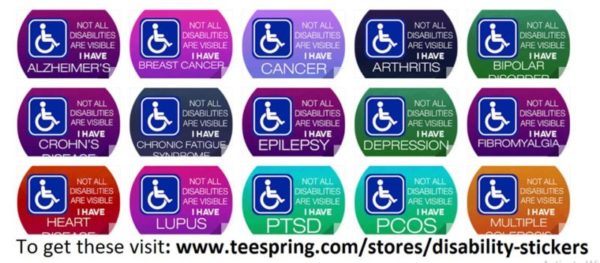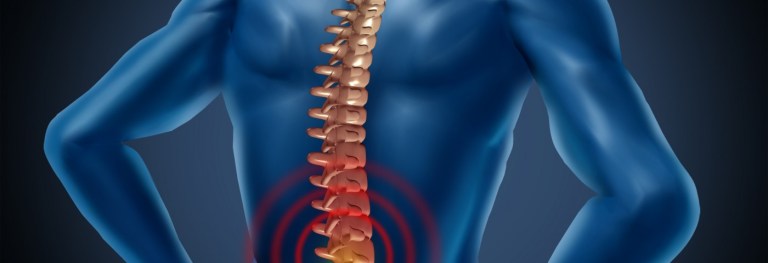In 2014, a survey of more than 1,300 fibromyalgia patients by the National Pain Foundation and National Pain Report found medical marijuana is more effective than Lyrica, Cymbalta or Savella, the three drugs approved by the Food and Drug Administration to treat the disorder. (If you’re curious about the effectiveness of Lyrica, Cymbalta, and Savella, then you might be interested in my post, “Why your fibro meds aren’t working.”)
There’s growing anecdotal evidence that marijuana relieves fibromyalgia pain, but actual research is still scant. Cannabis remains a schedule I controlled substance in the United States, making it difficult for researchers to study the plant’s pain-relieving properties. To date, there have been less than a handful of small studies using cannabis or its derivatives to treat fibromyalgia. Most of those have shown it to be beneficial, especially for pain relief.
But why does cannabis seem to work so well? Dr. Ethan Russo, medical director of PHYTECS, believes fibromyalgia’s multifaceted symptoms may be caused by a deficiency in the body’s endocannabinoid system (ECS), a condition he calls Clinical Endocannabinoid Deficiency (CED). Maybe the reason cannabis is so effective is that it’s simply supplementing what the body needs – similar to how people take a supplement to treat vitamin D or B12 deficiency.
Russo explores the evidence behind his hypothesis in a soon-to-be published review entitled, “Clinical Endocannabinoid Deficiency Reconsidered: Current Research Supports the Theory in Migraine, Fibromyalgia, Irritable Bowel, and other Treatment-Resistant Syndromes.” While his idea is still theoretical, there is some early research indicating he may be onto something.
The ECS is made up of cannabinoid receptors within the brain, spinal cord, nerves, gut, organs, and other locations in the body. It helps the body maintain homeostasis and is involved in a number of physiological processes, including pain sensation, mood, memory and appetite, among others. The body naturally makes endocannabinoids – the same kinds of endocannabinoids found in cannabis – that feed the ECS and keep it functioning.
Fibromyalgia causes symptoms throughout the body, with the primary ones being a pain, fatigue, and cognitive and sleep difficulties. Certain conditions, like irritable bowel syndrome (IBS) and migraine, are extremely common among those with fibromyalgia – so much so that Russo believes they may all be connected to an ECS deficiency.

Click Here to Visit the Store and find Much More….
His theory makes sense. The ECS plays a role in so many of the body’s major systems, so if it was indeed malfunctioning, that would account for why fibro sufferers have such varied symptoms. Supplementing the ECS with cannabinoids from the cannabis plant would, in theory, relieve symptoms because the deficiency is being treated.
Russo first posited that fibromyalgia, IBS and migraine may be caused by an ECS deficiency back in 2001. (Click here to read his first review on the subject.) His latest review gives an update on new research that supports ECS deficiency as a possible culprit for fibromyalgia, IBS and migraine.
“Additional studies have provided a firmer foundation for the theory,” he writes in the review, “while clinical data have also produced evidence for decreased pain, improved sleep and other benefits to cannabinoid treatment and adjunctive lifestyle approaches affecting the endocannabinoid system.”
CED is based on the premise that many brain disorders have been linked to neurotransmitter deficiencies. For example, dopamine has been implicated in Parkinson’s disease, and serotonin and norepinephrine have been associated with depression.
“If endocannabinoid function were decreased, it follows that a lowered pain threshold would be operative, along with derangements of digestion, mood and sleep among the almost universal physiological systems sub-served by the ECS,” Russo writes.
That’s a mouthful, but essentially it means if the ECS isn’t properly working, then it could account for the pain, sleep, digestive and other issues so common among fibromyalgia patients. Adding cannabinoids to the body through the use of cannabis may help to bring the ECS back into balance.
“It’s a key in a lock in your body that exists for a reason,” explains Dr. Jahan Marcu, chief scientist with Americans for Safe Access. “We send in cannabinoids to activate this system that’s supposed to be working. It’s a sort of care and feeding of the ECS so it can do its job.”
The best evidence for CED comes from an Italian migraine study, which found reduced levels of an endocannabinoid known as anandamide in patients with chronic migraines versus healthy controls.
“Reduced [anandamide] levels in the cerebrospinal fluid of chronic migraine patients support the hypothesis of the failure of this endogenous cannabinoid system in chronic migraine,” read the study.
Unfortunately, the Italian study will probably never be repeated in the United States because it required risky and invasive lumbar punctures.
In the gut, the ECS modulates the movement of food along the digestive tract, the release of digestive juices to break down food and inflammation.
Cannabis has long been used to treat digestive issues and was one of the first effective treatments for diarrhea caused by cholera in the 19th century.
“Unfortunately while many patient surveys have touted the benefit of cannabinoid treatment of IBS symptoms, and abundant anecdotal support is evident on the Internet, little actual clinical work has been accomplished,” Russo writes.
A few studies using marijuana for fibromyalgia have had positive results. Overall, marijuana has been found to decrease pain and anxiety, and improve sleep and general well-being.
“There is actually some evidence that the levels of at least one endocannabinoid (anandamide) increase in the circulation of patients with fibromyalgia,” says Prof. Roger G. Pertwee from the University of Aberdeen in Scotland. “There is also considerable evidence that anandamide is often released in a manner that reduces unwanted symptoms such as pain and spasticity in certain disorders. … It is generally accepted that THC, the main psychoactive constituent of cannabis, can relieve pain, including neuropathic pain for example, by directly activating cannabinoid receptors. … Some non-psychoactive constituents of cannabis have also been found to relieve signs of pain, at least in animal models.”
For anecdotal evidence, Russo cites the National Pain Foundation/National Pain Report survey in his review, saying, “The results of the survey strongly favor cannabis over the poorly effective prescription medicines. These results certainly support an urgent need for more definitive randomized controlled trials of a well-formulated and standardized cannabis-based medicine in fibromyalgia inasmuch as existing medicines with regulatory approval seem to fall quite short of the mark.”

More research needs to be done to either prove or disprove CED’s existence.
“What we really need is randomized controlled trials to look at this more carefully, and that’s the only kind of evidence that the [Food and Drug Administration] and most doctors are going to find acceptable in the end,” Russo says.
MRI and PET scans are not yet able to detect endocannabinoid levels in living patients, but as technology advances, that may become a possibility. The ability to actually test endocannabinoid levels in fibromyalgia patients and compare those against healthy controls would help to confirm Russo’s theory.
“We’re on the edge of having that capability,” Russo says. “It’s in my plans to look at this type of thing in the future.”
Source: fedupwithfatigue.com
[mailpoet_form id=”2″]


what about treatment for M.E ?
took nearly 4 years, but I ended fibromyalgia pain with qigong, meditation + cannabis. Quit pharmaceuticals first!
would love to trade all my meds cymbals lyrics bete blockers steroids ECT for medicinal cannabis I know it works.
I’m studying non-psychoactive CBD and the effects on pain and inflammation, definitely in alignment with my studies! Very few people are are we have an endocannabinoid system, once they do, it’s an easy conversation. Awesome article, so excited to share!
People, still don’t understand “pot” in the medicinal form. You can smoke it, eat it, vape it, eat it in public and no one knows. You can travel with it too.
Many studies available on pubmed.gov and echoconnection.org
I’ve had upper, middle and lower back pain all of my adult life. The fatigue started 10 years ago and then came what felt like 2 broken feet. Numerous blood tests and doctor visits later, I was diagnosed with Fibromyalgia. I think the stabbing pains are the worst, the fact that my feet still hurt was the most depressing.
I started using fibromyalgia herbal remedy i purchased from Best Health Herbal Centre february this year. I only used it for a month and two weeks, my condition changed automatically, all my symptoms are gone. Am now living fibromyalgia free.
All thank to Best Health Herbal Centre, i will never stop telling the world about your good work…..To know more about Best Health Herbal Centre visit w ww .besthealthherbalcentre. com. Thanks..